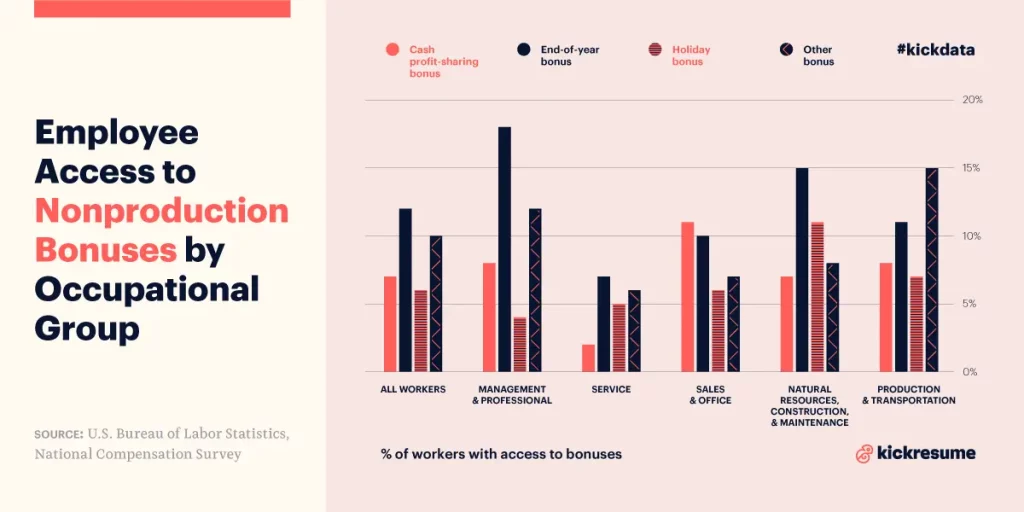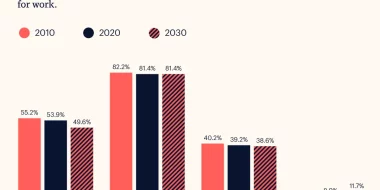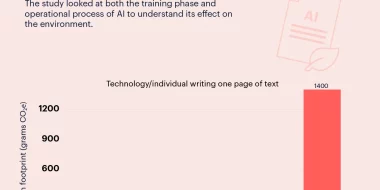Employee Access to Nonproduction Bonuses
In the world of employee rewards, nonproduction bonuses make a unique splash. These are enticing cash incentives given to employees, independent of their individual productivity levels. It’s like receiving a surprise pat on the back for simply being part of the team.
Access to different nonproduction bonuses encompasses such types as end-of-year, holiday, cash profit sharing, retention, attendance bonus, and others.
Approaching the end of a 12-month business cycle, employees simply want to be rewarded, acknowledged, and motivated. And that’s exactly what these bonuses are made for.
So what are the statistics behind them?
The overall percentage of workers who had access to nonproduction bonuses in March 2022 reached 41 percent for the private industry and 37 percent for the state and local government sector.
It surely looks like the most popular bonus was the end-of-year one. It was granted to 12 percent of all private industry workers. Meanwhile, as few as 6 percent of all employees received a holiday bonus.
Management and professional jobs were more likely to receive bonuses
In fact, the way bonuses were distributed varied by occupational group. And one of the highlights was surely a significant proportion (18 percent) of management and professional jobs that received an end-of-year bonus.
A typical year-end bonus naturally depends on the role one holds. The average bonus in the United States was 11 percent of exempt workers’ salaries and 6.8 percent of nonexempt employees’ pay.
However, end-of-year bonuses were not equally dominant in all five occupational groups. The most common way of compensation for the sales sector was a cash profit-sharing bonus (made to 11 percent of employees). Meanwhile, 15 percent of production and transportation employees got other than usual bonuses.
What were the employer costs for nonproduction bonuses?
Taking into account 41 percent of private industry workers with access to nonproduction bonuses, we can estimate an employer cost of $2.27 per hour worked.
Let’s take a closer look at estimated employer costs by industry group. It seems that bonuses among jobs involving financial activities cost an employer $4.57 per hour worked.
What’s on the other side of the cost spectrum? Employers in the leisure and hospitality sector spent the least amount on nonproduction bonuses ($0.57 per hour worked).



